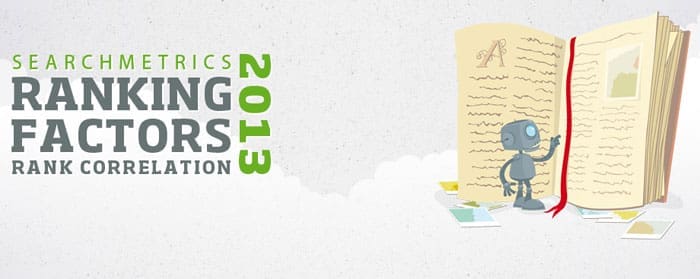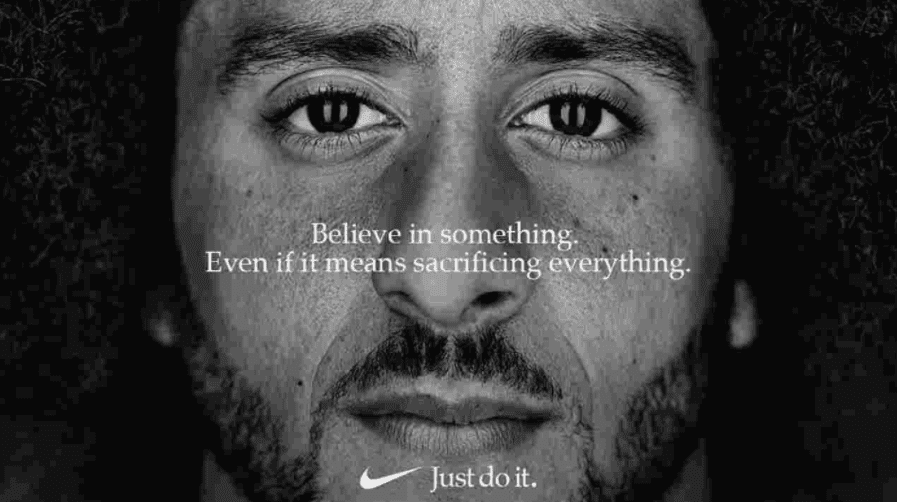SearchMetrics, a leading provider of enterprise caliber SEO Campaign Management software, fields an annual study that analyzes what “factors” most heavily influence organic ranking. In this study, they identify Google ranking factors by drawing a correlation between success on the SERPs and the types of internet marketing tactics each website has undertaken as promotional activities.
Last year, we saw social signals begin to impact the SERPs more heavily than in years prior.
Predictions were all over the place as to what would come next, but everyone generally presumed that social would play a growing role in ranking.
Let’s look at the data to see what they actually found, and then you can read my analysis of the findings below.

Google Ranking Factors for 2013
The Google ranking factors were separated into sections for the report, but the below is my list of conclusions from the data presented.
Social Media Has Become a Force for Ranking…
After seeing some social factors moving up in the SearchMetrics list during 2012, we see social representing seven of the top eight positively correlated factors in 2013.
Google+ has leaped to the top of the list, and even Pinterest has begun to play a heavy role in search engine visibility.
At Return On Now, we have watched this happen firsthand. One of the fastest ways to get new content indexed is to post a link to it on Google+.
Content that gets more social shares, likes, and +1’s tend to drive more impressions in search, albeit sometimes only for a fleeting period of time.
What I see is a combination of Fresh content and social activity, which Google can combine to rank content according to relevance, reactions, and timeliness.
This is a huge advancement for them, and one that Google+ has greatly assisted in figuring out.
And we’re nowhere near finished.
As Authorship begins to grow in adoption, the impact of social activity on ranking will only continue to grow. [UPDATE: Google abandoned authorship in 2014 when they shuttered Google+]
This is an exciting time to be in content marketing, social media, or search engine optimization.
…But Links Still Drive The Boat
Two or three years ago, ranking was mostly about on page and link building.
Once you built a site and optimized the on page, it made sense to put a bulk of the ongoing effort into content generation and link building.
Well, even with social media growing rapidly, links remain critical to your website ranking.
Number of backlinks tied Facebook shares as the second most impactful Google ranking factor in this year’s study.
If you were to remove the social factors from the list, offsite links would account for five of the top seven factors for ranking (internal links would be the sixth).
Curiously enough, links from one’s own country showed up rather high but links from sites in the same niche did not.
Also of note, percentage of links with “rel=nofollow” was the most important link-related factor after volume of links.
I’d like to see them include something like “percentage of links from sites in same/similar niche” as a factor to evaluate in 2014.
Over-Optimization Is Still Under Attack
Speaking of links and anchor text, the study found that keyword appearance in either a URL or a backlink is just about irrelevant after the first two waves of Penguin.
The only correlation they mentioned was that, if managed poorly, over optimization can actually hurt you.
Anyone out there surprised? I’m not.
Content Optimization Matters, A Lot
In the “Year of Content Marketing”, the study results certainly support the idea that content is a powerful tool.
11 of the top 35 Google ranking factors related to content, internal linking, and similar activities.
Granted, none of them had as heavy of an impact as social signals and links.
But when taken altogether, we see that high quality, optimized content can greatly impact organic results.
Specific factors included were things like word count, keywords in H2, keywords in body copy, image count, number of external links, and html length.
If you aim to optimize for search engines, on page remains a very important factor in driving ranking.
Speaking of on page, there were another 12 ranking factors that were not specifically part of the content itself, which brings us to 23 factors between content and on page.
These additional 12 were things like appearance of keyword in page title, appearance of keyword in meta description, length of URL, existence of meta description, appearance of video on the page, and similar topics.
Brands Have a Distinct Advantage
As Google continues to more aggressively push Exact Match and Partial Match Domains down the SERPs, who wins?
Well-known brands and domains of course.
This is important, especially for off page efforts / link building.
Well known brands are likely to get a large percentage of their links as naked URLs, brand mentions, and similar formats.
What does this mean?
Google is operating under the assumption that a natural link profile will include a large percentage of brand mentions, and much fewer money keywords in the anchor text.
This is not a surprising finding, as Google Penguin hammered websites that had link profile fraught with money keywords in their anchor text.
I’ve seen all the speculation that Google is favoring brands because it makes them more money.
Sure, it makes sense that Google is a business, and money plays into their decision making. But in the end, it’s the other way around.
Most brands are fortunate enough to already have the right type of link profile.
Even if a big brand had purchased links over the years, a good marketing and PR strategy will drive mentions and links in volume.
In the end, most of them will come out looking clean.
So if you are launching a new website, scrap the idea of buying a keyword rich domain.
Create a real and compelling brand. It will serve you better in the long run.
Technical SEO Remains Table Stakes
In reading through the results, the only true technical SEO factor I observed was site speed.
Obviously, page load time and server response time are both important to this Google ranking factor.
But if you think about it, any of the content and on page factors will be dependent on technical SEO to benefit the site.
If a page loads slowly, doesn’t display properly, or is hard to maneuver, links and shares will be hard to come by.
For sites that have shoddy user experiences, users will bounce and likely never even see the content, regardless of how well it is written and optimized.
My point is this: take all of the results into account.
But before you act on it, get the site in order by:
- Improving performance
- Cleaning up errors
- Assisting the search engines with crawling and indexing your site
- Marking it up to help add semantic data to your architecture (which also helps with AI visibility in 2024 and beyond)
Once your site is tuned up and ready to go, use this data to consider which areas to focus on first.
Download the original SearchMetrics SEO Ranking Factors Report at this link.
Header image courtesy of SearchMetrics, originally found at http://www.searchmetrics.com/en/services/ranking-factors-2013/?goback=%2Egde_118769_member_253916588
Updated October 30, 2025
Tommy Landry
Latest posts by Tommy Landry (see all)
- B2B SEO in 2025: Winning Visibility in AI-Curated Buyer Journeys - December 16, 2025
- Local SEO Meets AEO and GEO: How AI Platforms Read Local Authority Signals - December 9, 2025
- What Is an SEO Proposal and What Should It Include? - December 2, 2025





